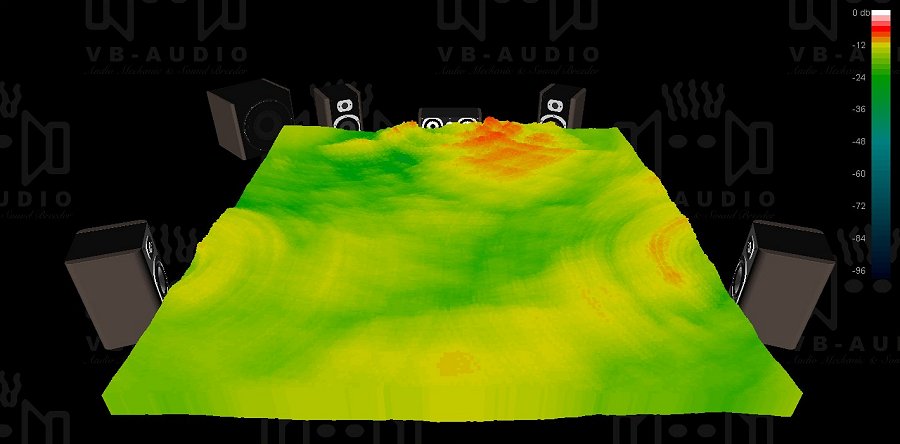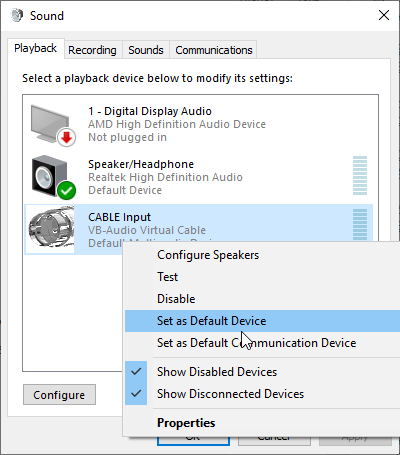

You can share each Virtual Cable between any number of KS-aware audio applications or ASIO wrappers, at the same time with WASAPI Exclusive Mode connection.

#How to setup vb audio cable windows 10 software#
Software synthesizers and studio/DAW (Ableton, Acid, AudioMulch, Band-in-a-Box, Bidule, Cakewalk/Sonar, Cubase, FL Studio, GarageBand, Logic, MiniMoog, n-Track, Nuendo, Reaktor, REAPER, Reason, Samplitude, Traktor, Vegas).Speech synthesis/recognition (Google Text-to-Speech/Speech-to-Text, Dragon Naturally Speaking).Live broadcasting (Open Broadcaster/OBS Studio, WireCast, VidBlasterX, SAM Broadcaster).Live mixing/DJ (vMix, Mixxx, VirtualDJ, VoiceMeeter Banana/Potato).Internet Telephony/VoIP/SIP/voice messengers (Skype, Discord, Ventrilo, MicroSIP).Use VAC with the following audio applications and application classes: For support of older Windows releases, please visit VAC 3 page. VAC 4 works only under Windows versions starting from XP (5.1). If you decide to try them, don't forget to check their sites/binaries with antivirus services. Some of them just use this name for promotional purposes, but some others are completely fake and contain malware. There are several other products named "Virtual Audio Cable" in the net. VAC works in Windows XP, Vista, 7, 8, 8.1 and 10. To transfer/route audio signals from an endpoint (device) to another, VAC offers Audio Repeater application. In well-tuned systems, signal latency is very low. If all required conditions are met, audio transfer is bitperfect, suitable for audiophile applications. There is no quality loss (if no format conversion and/or volume control are involved). VAC delivers audio signals completely inside the computer. From the recording endpoint, each app gets its own copy of the sound. Sounds directed to the same playback endpoint are mixed. Actual device/endpoint names that you will see in applications' windows, are different (for example, "Line 1", "Line 2" etc.).Įach side of any Virtual Cable can be used by several apps at the same time. The "Virtual Cable" term is used only in VAC description, as a placeholder. Such virtual devices are named Virtual Cables. But if another application records from the input, it receives the sound produced by the first app. If an application plays audio to the output, the sound will not be audible because the signal is looped back to the input. Each device simulates an audio adapter (card) whose output is internally connected to the input, making a loopback. VAC creates a set of virtual audio devices. Virtual Audio Cable (VAC) is an audio bridge between applications that transmits sounds (audio streams) from app to app, from device to device.


 0 kommentar(er)
0 kommentar(er)
